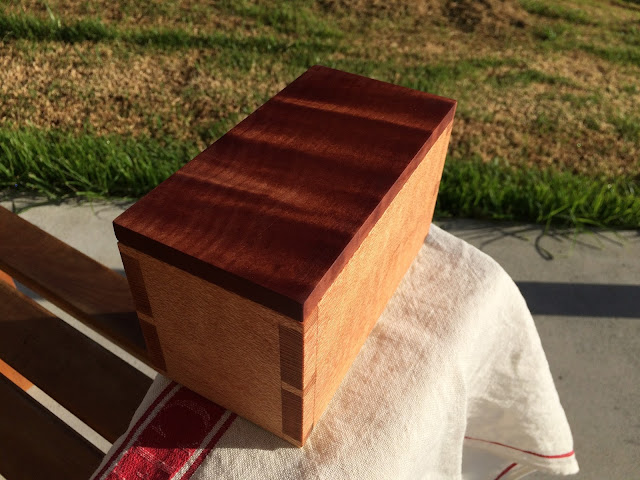 |
| St Pancras Railway Station (1868) (Photo by Przsac) |
 |
| Villa Savoye by Le Corbuiser (1931) (Photo by Mary Anne Sullivan) |
- Modernism - 'Form follows function.'
- Post Modernism - 'Function? Who cares?' or perhaps 'The above, but with some decoration stuck on top.'
 |
| M2 Building by Kengo Kuma (1999) (Photo by wiiii on Wikipedia) |
This may sound harsh, because many architects still design in the post modern style (whether they admit it or not). Post Modernism gives licence to designers to do pretty much whatever they want, which can be both good and bad. Often it can leave the general public either in awe, or just deeply confused. Here is a hotel I stayed at while in Abu Dhabi:
 |
| Hyatt Capital Gate (2010) (Photo by FritzDaCat on Wikipedia) |
Personally, I am generally 'in awe' of these sorts of buildings, but they can easily become a mess of awkward shapes and textures, aesthetically disjointed or with layouts that are impractical and inefficient.
Turning the clock a long way back, we come to Vitruvius (approx 80-70BC to 15AD). He was an architect and engineer (civil and military) in the Roman Empire during the reign of Augustus. We know about him primarily because of his book De Architectura, which was a 'how-to' guide written for Caesar on the nuts and bolts of building design but also town planning, music, civil engineering machines etc.
He is sometimes called the 'father of architecture', but this is mainly because his book survived. Today he would probably be called a civil engineer rather than an architect, and definitely regarded as a polymath.
He talks of the ancients (the Greeks) as the creators of the three orders of classical architecture (Doric, Ionic and Corinthian - yes, I know, there were five, but the other two came much later), so there must have been many people thinking about and designing buildings before him.
 |
| From Wikipedia |
Classical architecture has been revived and revived again over the centuries. Its elements only really disappeared with Modernism, and then made fleeting token appearances in Post Modern architecture (e.g. the M2 Building above, or those hollow round columns adorning McMansions and malls everywhere - more set scenery than architecture).
The book itself is quite prescriptive; on materials, layouts, proportions, spacing of columns etc. In some ways it is like a Roman building code.
But underlying De Architectura is a design philosophy summarised in three words: firmitas, utilitas and venustas or stability, utility and beauty. They have at their root reflection of the natural environment (people, animals, the seasons etc). The columns in a temple were based on the proportions of a standing person, and some buildings even had statues for columns. This was a common theme in the religious beliefs of the time, when there was a strong link between the gods and the terrestrial, rather than the more ethereal concepts in monotheism that followed.
There is was also no prioritisation of these three values, as in Modernism - If you make it strong and useful it will be beautiful (hopefully). Or as in Post Modernism - Make it beautiful (or weird, your choice), leave the strength and utility to the engineers to handle.
Maybe it is time for a new architectural style, post- post-modern. One that values strength, usefulness and aesthetics equally, and fully. One that is also integrally linked to the environment. A New Vitruvian style!








































